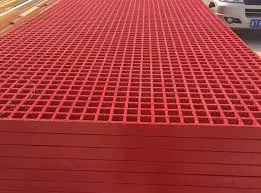
-
 Afrikaans
Afrikaans -
 Albanian
Albanian -
 Amharic
Amharic -
 Arabic
Arabic -
 Armenian
Armenian -
 Azerbaijani
Azerbaijani -
 Basque
Basque -
 Belarusian
Belarusian -
 Bengali
Bengali -
 Bosnian
Bosnian -
 Bulgarian
Bulgarian -
 Catalan
Catalan -
 Cebuano
Cebuano -
 China
China -
 China (Taiwan)
China (Taiwan) -
 Corsican
Corsican -
 Croatian
Croatian -
 Czech
Czech -
 Danish
Danish -
 Dutch
Dutch -
 English
English -
 Esperanto
Esperanto -
 Estonian
Estonian -
 Finnish
Finnish -
 French
French -
 Frisian
Frisian -
 Galician
Galician -
 Georgian
Georgian -
 German
German -
 Greek
Greek -
 Gujarati
Gujarati -
 Haitian Creole
Haitian Creole -
 hausa
hausa -
 hawaiian
hawaiian -
 Hebrew
Hebrew -
 Hindi
Hindi -
 Miao
Miao -
 Hungarian
Hungarian -
 Icelandic
Icelandic -
 igbo
igbo -
 Indonesian
Indonesian -
 irish
irish -
 Italian
Italian -
 Japanese
Japanese -
 Javanese
Javanese -
 Kannada
Kannada -
 kazakh
kazakh -
 Khmer
Khmer -
 Rwandese
Rwandese -
 Korean
Korean -
 Kurdish
Kurdish -
 Kyrgyz
Kyrgyz -
 Lao
Lao -
 Latin
Latin -
 Latvian
Latvian -
 Lithuanian
Lithuanian -
 Luxembourgish
Luxembourgish -
 Macedonian
Macedonian -
 Malgashi
Malgashi -
 Malay
Malay -
 Malayalam
Malayalam -
 Maltese
Maltese -
 Maori
Maori -
 Marathi
Marathi -
 Mongolian
Mongolian -
 Myanmar
Myanmar -
 Nepali
Nepali -
 Norwegian
Norwegian -
 Norwegian
Norwegian -
 Occitan
Occitan -
 Pashto
Pashto -
 Persian
Persian -
 Polish
Polish -
 Portuguese
Portuguese -
 Punjabi
Punjabi -
 Romanian
Romanian -
 Russian
Russian -
 Samoan
Samoan -
 Scottish Gaelic
Scottish Gaelic -
 Serbian
Serbian -
 Sesotho
Sesotho -
 Shona
Shona -
 Sindhi
Sindhi -
 Sinhala
Sinhala -
 Slovak
Slovak -
 Slovenian
Slovenian -
 Somali
Somali -
 Spanish
Spanish -
 Sundanese
Sundanese -
 Swahili
Swahili -
 Swedish
Swedish -
 Tagalog
Tagalog -
 Tajik
Tajik -
 Tamil
Tamil -
 Tatar
Tatar -
 Telugu
Telugu -
 Thai
Thai -
 Turkish
Turkish -
 Turkmen
Turkmen -
 Ukrainian
Ukrainian -
 Urdu
Urdu -
 Uighur
Uighur -
 Uzbek
Uzbek -
 Vietnamese
Vietnamese -
 Welsh
Welsh -
 Bantu
Bantu -
 Yiddish
Yiddish -
 Yoruba
Yoruba -
 Zulu
Zulu
Exploring the Benefits and Applications of FRP Tee Connections in Construction
Understanding FRP Tee Applications and Advantages
Fiber Reinforced Polymer (FRP) is a composite material made from a polymer matrix reinforced with fibers. The unique properties of FRP make it an ideal choice for various applications in industries such as construction, aerospace, automotive, and marine. Among the numerous components created using FRP, the FRP tee is a notable element that has gained substantial attention for its structural properties and versatility.
An FRP tee is a T-shaped component constructed from fiber reinforced polymers, which combines the advantages of tensile strength, corrosion resistance, and lightweight characteristics. Its design features a vertical stem and a horizontal wing, resembling the letter T. This configuration enables the distribution of loads efficiently, making it suitable for various construction and engineering applications.
.
In addition to their corrosion resistance, FRP tees are incredibly lightweight compared to their metallic counterparts. This quality not only simplifies handling and installation but also reduces transportation costs. The low weight of FRP components allows for easier manipulation on job sites, minimizing the need for heavy machinery and decreasing labor costs associated with installation. Furthermore, the lightweight nature of FRP tees contributes to overall energy efficiency in structures where weight is a critical factor.
frp tee

Another significant advantage of FRP tees is their high tensile strength-to-weight ratio. The incorporation of fibers—commonly glass or carbon—within the polymer matrix enhances the tensile strength significantly. As a result, FRP tees offer enhanced load-bearing capabilities, making them ideal for structural applications. They are commonly used in bridge constructions, structural beams, and support systems where high load-bearing capabilities are essential.
Despite the myriad benefits, one must also consider the economic aspects of using FRP tees. Historically, the initial cost of FRP materials has been higher than that of traditional materials. However, when evaluating the total life-cycle costs, including longevity, reduced maintenance, and labor savings during installation, FRP tees often become a more economical choice in the long term. Their resilience to wear and tear leads to lower maintenance expenses, providing a compelling argument for their use in construction and engineering projects.
Furthermore, the versatility of FRP tees extends beyond structural applications. They can be incorporated into architectural designs, offering aesthetic options along with functional benefits. The ability to mold and shape FRP components allows designers to create custom solutions that meet both structural and aesthetic demands. This adaptability ensures that FRP tees can be integrated seamlessly into various projects, from infrastructure to commercial buildings.
In the realm of sustainability, FRP materials are increasingly recognized as environmentally friendly options. The composite nature of FRP means that it can often be produced from recycled materials, contributing to the reduction of waste and the consumption of non-renewable resources. Moreover, the energy efficiency and longevity of FRP tees further bolster their appeal as a sustainable choice for modern construction.
In conclusion, FRP tees represent a compelling option for a wide range of applications across various industries. Their corrosion resistance, lightweight, high tensile strength, and adaptability make them an essential component in modern engineering and construction. While the initial costs may be higher compared to traditional materials, the long-term economic and environmental benefits are undeniable. As industries move towards more sustainable practices, the demand for innovative materials like FRP is likely to grow, positioning FRP tees as a crucial element in the future of structural solutions. As engineers and architects continue to seek durable, efficient, and sustainable materials, FRP tees will undoubtedly play a vital role in shaping the landscape of modern infrastructure.









